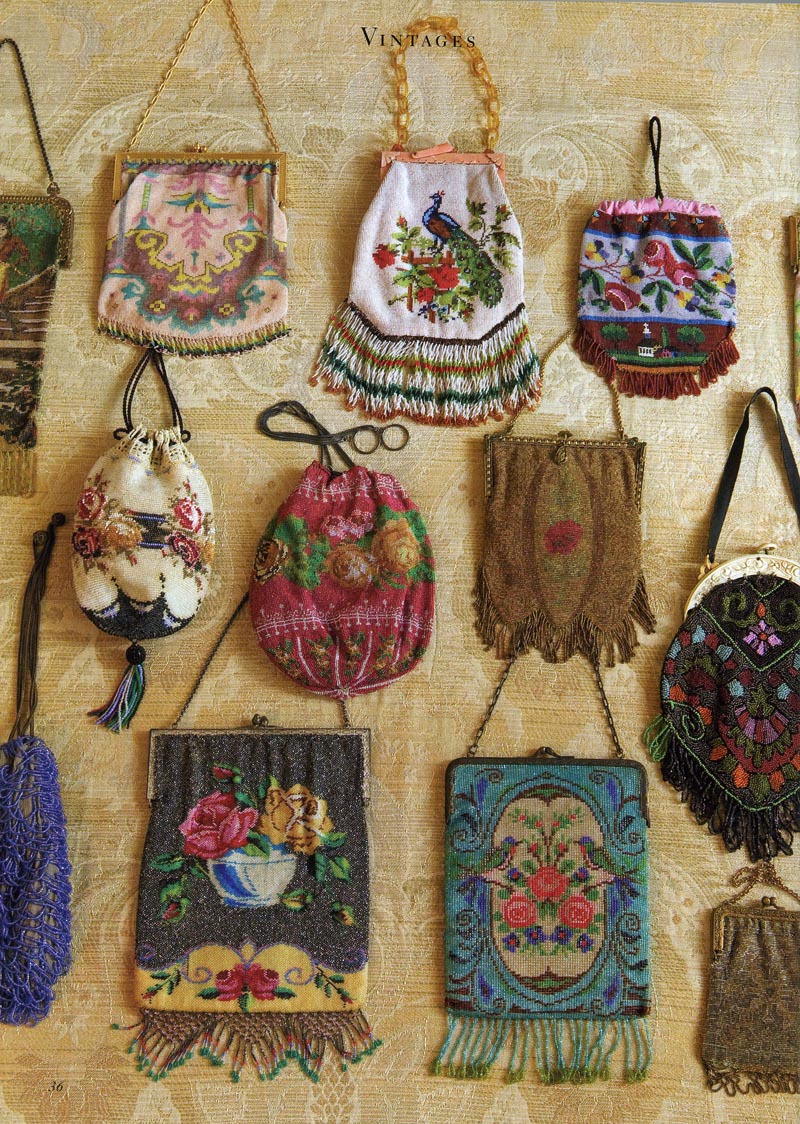
From Victoria Magazine, March/April 2008 Issue
"These bead bags carry us straight back fifty years to the days of hoop skirts and muslin tuckers, lace mits, and pantalets." —The New York Times, 1914
Photography by Marcy Black Simpson
The Whims of Fashion
In the realm of high fashion, it is inevitable that everything old will at some point be made new again. This is true not only of skirt lengths and silhouettes, but also of the almost imperceptible details— the buttons, bows, and buckles—and, of course, the accessories that complete the ensemble.
A woman's purse is a favorite and enduring accessory and a symbol of status and style, especially ornate evening bags. "A purse is not a thing that sits on the shelf that you can look at but can't do much with; it's a practical object," says beading author and scholar Alice Scherer. "It can also dress up an outfit. You can place a purse on a table when you're dining, where people can see it. They may not be able to see your shoes under the table, but they can see your handbag."
Alice is founder of the Center for the Study of Beadwork in Portland, Oregon, and an officer for the national Society of Bead Researchers. She says beading is an art and craft that has for centuries signified prominence and beauty, and, with purses, can indicate much of the history and politics of the era in which it was produced. "In Italy, for instance, during World Wars I and II, you see a lot of reduction in the amount of beads being made, and the ability to move the product was compromised."
The famed Venetian glass beads, sought after from the thirteenth century on, and the beads of other international craftsmen have long adorned the jewelry, clothing, and purses of the fashion-forward, from Elizabethan "sweete bags" to Victorian-era opera bags to the prized purses still produced by renowned designer Judith Leiber.
Today, collectors and fashion lovers continue to revere elegant beaded bags, an art form that Alice says combines exquisite color with texture. "You start with one basic simple element—the bead—that is insignificant in and of itself, and by the process of incrementalism, you create something that is much larger than the sum of its parts."
Beading has excited both collectors and craftsmen for centuries. Enthusiasts of all levels of experience and interest can learn more about the time-honored art form this month at the Bead Expo, held March in Portland, Oregon. The annual four-day event will feature more than 80 classes with instructors, from around the country.
For more information about the Bead Expo, visit wwss.beadexpo.com.
